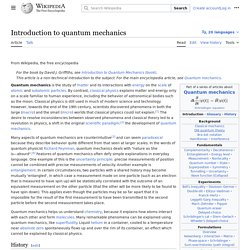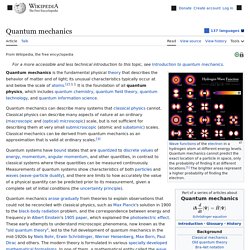

Gravitational Waves. Quantum Mechanics Physicists. Interpretations of Quantum Mechanics. Quantum Entanglement. Quantum Numbers. Hawking Radiation. Atomic, Molecular and Optical Physics (AMO) Quantum Mechanics Experiments. Fundamental Concepts of Quantum Mechanics. Subatomic Particles. Dr. Fred Alan Wolf (Dr. Quantum) - TEDxReset Talk 2011. Mathematics Links Quantum Encryption and Black Holes. A proposed mathematical proof that outlines the way information behaves in coded messages may have implications for black holes.

The proof suggests that the radiation spit out by black holes may retain information on the dark behemoths. The research focuses on encoding communications in quantum mechanical systems. But it also connects to a long-standing question for physicists: What happens to all the stuff that falls into a black hole, and is it possible to retrieve any information about the black hole?
A group of researchers from Switzerland and Canada, led by Frédéric Dupuis, showed that it's possible to encode large messages with relatively small quantum encryption keys, which are keys made up of subatomic particles or photons. But the result implies something else: If someone could pull out information that is encrypted quantum mechanically in a message between two parties, the same feat should work in nature. Coding with particles. Documentary The Universe Quantum Physics Microscopic Universe. THE QUANTUM REVOLUTION - Michio Kaku (full documentary) Quantum Mechanics: Fabric of the Cosmos - Documentary. Everything You Know About Black Holes is Wrong. If most people know one thing about black holes, they probably know that nothing can escape from them, not even light.

Yet this most basic tenet about black holes has actually been disproven by the theory of quantum mechanics, explains theoretical physicist Edward Witten of the Institute for Advanced Study in Princeton, NJ, in an essay published online today (Aug. 2) in the journal Science. Black holes, in the classical picture of physics, are incredibly dense objects where space and time are so warped that nothing can escape from their gravitational grasp. In another essay in the same issue of Science, theoretical physicist Kip Thorne of Caltech describes them as "objects made wholly and solely from curved spacetime.
" Yet this basic picture appears to contradict the laws of quantum mechanics, which govern the universe's tiniest elements. In quantum mechanics, if a reaction is possible, the opposite reaction is also possible, Witten explained. 0 of 9 questions complete. Introduction to quantum mechanics. Many aspects of quantum mechanics are counterintuitive[3] and can seem paradoxical, because they describe behavior quite different from that seen at larger length scales.

In the words of quantum physicist Richard Feynman, quantum mechanics deals with "nature as She is – absurd".[4] For example, the uncertainty principle of quantum mechanics means that the more closely one pins down one measurement (such as the position of a particle), the less accurate another measurement pertaining to the same particle (such as its momentum) must become. The first quantum theory: Max Planck and black-body radiation[edit] Hot metalwork. The yellow-orange glow is the visible part of the thermal radiation emitted due to the high temperature. Quantum mechanics. Wavefunctions of the electron in a hydrogen atom at different energy levels.

Quantum mechanics cannot predict the exact location of a particle in space, only the probability of finding it at different locations.[1] The brighter areas represent a higher probability of finding the electron. Quantum mechanics (QM; also known as quantum physics, quantum theory, the wave mechanical model, or matrix mechanics), including quantum field theory, is a fundamental theory in physics which describes nature at the smallest scales of atoms and subatomic particles.[2] Quantum mechanics gradually arose from theories to explain observations which could not be reconciled with classical physics, such as Max Planck's solution in 1900 to the black-body radiation problem, and from the correspondence between energy and frequency in Albert Einstein's 1905 paper which explained the photoelectric effect. History[edit] In 1838, Michael Faraday discovered cathode rays.
Where h is Planck's constant. Coulomb potential. Quantenstatistik. In der Quantenstatistik wird das Verhalten makroskopischer Systeme mit den Methoden der Quantenmechanik untersucht.

Ähnlich wie in der klassischen statistischen Physik geht man davon aus, dass sich das System in einem Zustand befindet, der nur durch makroskopische Größen bestimmt ist, aber durch eine große Anzahl verschiedener, nicht näher bekannter, Mikrozustände realisiert sein kann. Jedoch wird das Abzählen der verschiedenen möglichen Mikrozustände dahin gehend abgeändert, dass das Vertauschen zweier gleicher Teilchen keinen verschiedenen Mikrozustand hervorbringt. Damit wird dem besonderen Charakter der Ununterscheidbarkeit identischer Teilchen Rechnung getragen. Mithilfe der Quantenstatistik berücksichtigt man die folgende doppelte Unkenntnis:[1]